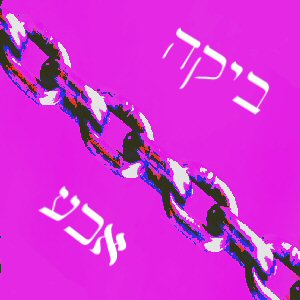The Original Followers of Yeshua Used a Hebrew and Aramaic NT
The original followers of Yeshua were in fact an ancient sect of Jews known as the Nazarenes (or Netzarim) (Acts 24:5). The fourth century "church father" Epiphanius described them as follows:
But these sectarians... did not call themselves Christians--but "Nazarenes," ... However they are simply complete Jews. They use not only the New Testament but the Old Testament as well, as the Jews do... They have no different ideas, but confess everything exactly as the Law proclaims it and in the Jewish fashion-- except for their belief in Messiah, if you please! For they acknowledge both the resurrection of the dead and the divine creation of all things, and declare that God is one, and that his son is Yeshua the Messiah. They are trained to a nicety in Hebrew. For among them the entire Law, the Prophets, and the... Writings... are read in Hebrew, as they surely are by the Jews. They are different from the Jews, and different from Christians, only in the following. They disagree with Jews because they have come to faith in Messiah; but since they are still fettered by the Law-- circumcision, the Sabbath, and the rest-- they are not in accord with Christians.... they are nothing but Jews.... They have the Goodnews according to Matthew in its entirety in Hebrew. For it is clear that they still preserve this, in the Hebrew alphabet, as it was originally written.
(Epiphanius; Panarion 29)
Certainly getting back to the "New Testament Church" means getting back to the Jewish roots of the original Jewish believers in Yeshua as Messiah.
If we are to truly return to these Jewish roots then we must seek to better understand what the "New Testament" actually says in the languages in which it was written. The books known as the “New Testament” were originally written in Hebrew and Aramaic and were later translated into Greek, Latin and other European languages. We are, for the first time, making the original Hebrew and Aramaic source texts of the books of the Ketuvim Netzarim (the so-called “New Testament”) available online in interlinear format, keyed to Strong’s word numbers. The purpose of this project is to make this material easy for everyone to use, not only with Strong’s Concordance, but with many other books that are also keyed to these same word numbers. Visit our new website for this ongoing project by clicking here.
Many passages in the New Testament do not make sense at all in Greek, but only begin to make sense in Hebrew and Aramaic.

Comments
Post a Comment